Filter by

The Immune System in Space: Are we prepared?
This book gives insight into the mechanism of the immune system and the influence of the environment on earth. Further, the book explains the changes that occur in our immune system in the absence of gravity and their fundamental consequences. Several limiting factors for human health and performance in microgravity have been clearly identified as an unacceptable risk for long-term and i…
- Edition
- 1
- ISBN/ISSN
- 978-3-319-41466-9
- Collation
- XVII, 127, 2 b/w illustrations, 13 illustrations in colour
- Series Title
- The Immune System in Space: Are we prepared?
- Call Number
- -

The Genetics of Type 2 Diabetes and Related Traits
This book presents the state of the art of type 2 diabetes genetics, from the process of genetic discovery to its interpretation and clinical application, and illustrates a model for other complex human phenotypes. The first section explores genome-wide association studies, the extension of this method to less accessible phenotypes and the arrival of next-generation sequencing. A further secti…
- Edition
- 1
- ISBN/ISSN
- 978-3-319-01574-3
- Collation
- XI, 576, 40 b/w illustrations, 13 illustrations in colour
- Series Title
- The Genetics of Type 2 Diabetes and Related Traits
- Call Number
- -
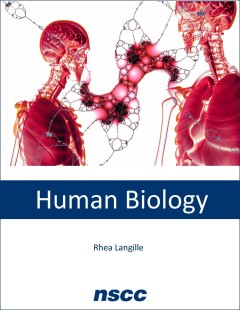
NSCC Human Biology
In this survey text, directed at those not majoring in biology, we dispel the assumption that a little learning is a dangerous thing. We hope that by skimming the surface of a very deep subject, biology, we may inspire you to drink more deeply and make more informed choices relating to your health, the environment, politics, and the greatest subject that are all of us are entwined in, life itself.
- Edition
- -
- ISBN/ISSN
- -
- Collation
- -
- Series Title
- -
- Call Number
- 570 LAN n

Sports Management and Sports Humanities
This book focuses on (1) sports management, (2) sports economics and policy, and (3) sports humanities. The fact that sports humanities is a part of the sports management education program means that a person with extensive knowledge—not only business-related comprehension but also acquaintance with art-related fields, such as the humanities and law—will play a central role in sports manage…
- Edition
- -
- ISBN/ISSN
- 978-4-431-55324-3
- Collation
- -
- Series Title
- -
- Call Number
- -

Sports Injuries and Prevention
This book presents the incidence of sports-related injuries, the types of injuries specific to particular sports, and the importance of factors such as age and gender. Possible injury mechanisms and risk factors are presented based on an analysis involving recent scientific findings. A variety of sports are included to allow the reader to better generalize the results as well as to apply approp…
- Edition
- -
- ISBN/ISSN
- 978-4-431-55318-2
- Collation
- -
- Series Title
- -
- Call Number
- -

Radionuclides in the Environment Influence of chemical speciation and plant …
This book provides extensive and comprehensive information to researchers and academicians who are interested in radionuclide contamination, its sources and environmental impact. It is also useful for graduate and undergraduate students specializing in radioactive-waste disposal and its impact on natural as well as manmade environments. A number of sites are affected by large legacies of was…
- Edition
- -
- ISBN/ISSN
- 978-3-319-22171-7
- Collation
- -
- Series Title
- -
- Call Number
- -
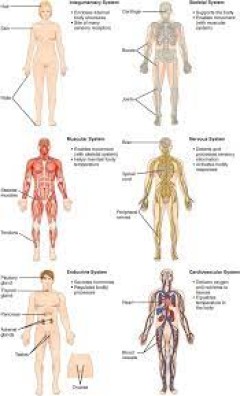
Human Anatomy and Physiology Preparatory Course
The overall purpose of this preparatory course textbook is to help students familiarize with some terms and some basic concepts they will find later in the Human Anatomy and Physiology I course. The organization and functioning of the human organism generally is discussed in terms of different levels of increasing complexity, from the smallest building blocks to the entire body. This Anatomy an…
- Edition
- -
- ISBN/ISSN
- -
- Collation
- -
- Series Title
- -
- Call Number
- 611 LIA h
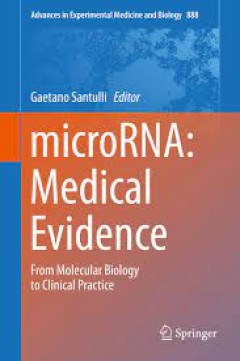
microRNA: Medical Evidence From Molecular Biology to Clinical Practice
This volume explores microRNA function in a wide array of human disorders, providing a clinical basis for precision medicine and personalized therapies using these molecules. The twenty-one chapters, all authored by internationally-renowned experts, open with an introduction contextualizing microRNA manipulation within today’s initiatives towards precision medicine. The following chapters exp…
- Edition
- -
- ISBN/ISSN
- 978-3-319-22671-2
- Collation
- -
- Series Title
- -
- Call Number
- -
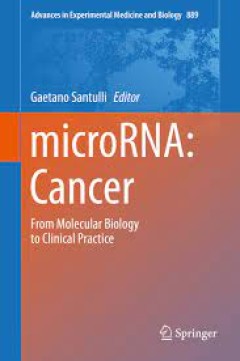
microRNA: Cancer From Molecular Biology to Clinical Practice
This volume thoroughly explores of the functional role of microRNAs in cancer. It not only expertly describes the molecular mechanisms underlying the malignant transformation process but also compiles cutting-edge research on microRNAs in several forms of cancer, including colorectal cancer, pancreatic cancer, leukemia/lymphoma, prostate cancer, lung cancer, ovarian cancer, and bone cancer. Dis…
- Edition
- -
- ISBN/ISSN
- 978-3-319-23730-5
- Collation
- -
- Series Title
- -
- Call Number
- -
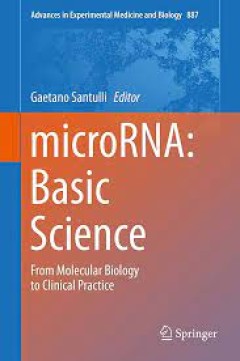
microRNA: Basic Science From Molecular Biology to Clinical Practice
This volume explores microRNA pathophysiology, focusing on basic concepts in molecular and cellular biology. Chapters contributed by leading scientists examine recently discovered pathways in several processes, including aging, diabetes, cardiovascular disease, hematopoiesis, and mitochondrial fitness. The authors contextualize microRNAs within epigenetics and micropeptidomics, angiongenesis an…
- Edition
- -
- ISBN/ISSN
- 978-3-319-22380-3
- Collation
- -
- Series Title
- -
- Call Number
- -
 Computer Science, Information & General Works
Computer Science, Information & General Works  Philosophy & Psychology
Philosophy & Psychology  Religion
Religion  Social Sciences
Social Sciences  Language
Language  Pure Science
Pure Science  Applied Sciences
Applied Sciences  Art & Recreation
Art & Recreation  Literature
Literature  History & Geography
History & Geography